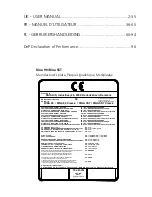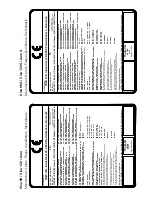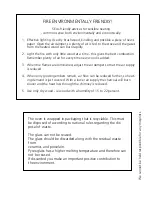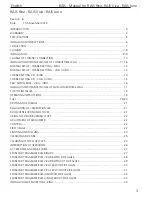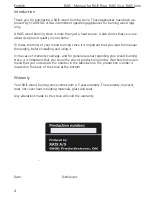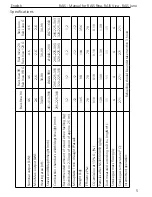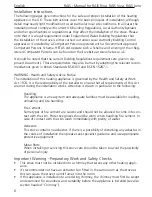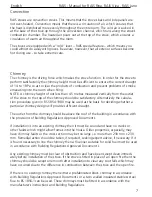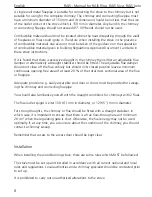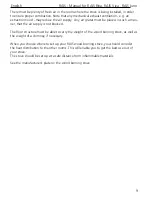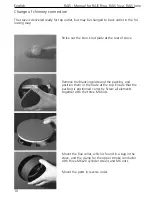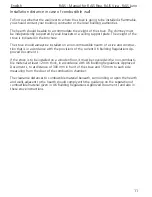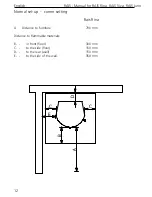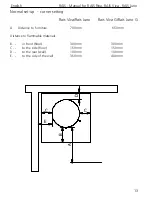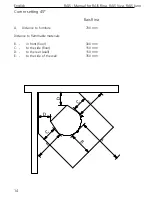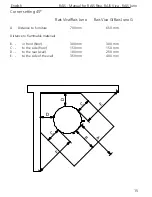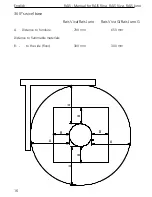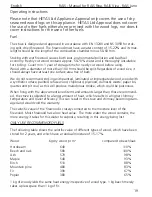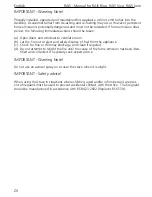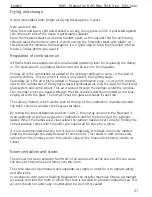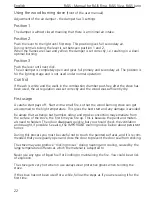
7
English RAIS - Manual for RAIS Rina, RAIS Viva , RAIS Juno
Convection
RAIS stoves are convection stoves. This means that the stove’s back and side panels are
not over-heated. Convection means that there is a circulation of air, which ensures that
the heat is distributed more evenly throughout the entire room. The cold air is sucked in
at the base of the stove up through the convection channel, which runs along the stove’s
combustion chamber. The heated air pours out at the top of the stove, which ensures a
circulation of warm air throughout the room.
The stoves are equipped with a “cold” lever – RAIS special feature – which means you
could almost do away with gloves. Be aware, however, that all exterior surfaces become
hot during use - so take extreme care.
Chimney
The chimney is the driving force which makes the stove function. In order for the stove to
perform satisfactorily the chimney height must be sufficient to ensure the correct draught
of 14 to 18 Pa so as to clear the products of combustion and prevent problems of smoke
emanating into the room when firing.
NOTE: A chimney height of not less than 4.5 metres measured vertically from the outlet
of the stove to the top of the chimney should be satisfactory. Alternatively the calcula-
tion procedure given in BS 5854:1980 may be used as the basis for deciding whether a
particular chimney design will provide sufficient draught.
The outlet from the chimney should be above the roof of the building in accordance with
the provisions of Building Regulations Approved Document J.
If installation is into an existing chimney then it must be sound and have no cracks or
other faults which might allow fumes into the house. Older properties, especially, may
have chimney faults or the cross section may be too large i.e. more than 230 mm x 230
mm. Remedial action should be taken, if required, seeking expert advice, if necessary. If it
is found necessary to line the chimney then a flue liner suitable for solid fuel must be used
in accordance with Building Regulations Approved Document J.
Any existing chimney must be clear of obstruction and have been swept clean immedi-
ately before installation of the stove. If the stove is fitted in place of an open fire then the
chimney should be swept one month after installation to clear any soot falls which may
have occurred due to the difference in combustion between the stove and the open fire.
If there is no existing chimney then either a prefabricated block chimney in accordance
with Building Regulations Approved Document J or a twin walled insulated stainless steel
flue to BS 1856-1can be used. These chimneys must be fitted in accordance with the
manufacturer’s instructions and Building Regulations.
Summary of Contents for RINA
Page 38: ...35 English RAIS Manual for RAIS Rina RAIS Viva RAIS Juno...
Page 98: ...4 3 5 1 2 10 8 7 6 9 12 11 RAIS RINA 90...
Page 99: ...6 5 7 4 3 11 2 4 1 10 12 8 9 14 13 RAIS VIVA 98 G...
Page 100: ...3 2 4 1 8 5 6 9 7 11 10 RAIS VIVA 98...
Page 101: ...6 5 7 2 4 14 1 10 12 8 9 4 3 11 13 RAIS VIVA 120 G...
Page 102: ...3 2 4 11 1 10 8 9 7 6 5 RAIS VIVA 120...
Page 103: ...1 2 3 4 4 5 6 7 8 9 10 11 12 13 RAIS JUNO 1560 G...
Page 104: ...1 2 10 8 1 9 5 3 4 6 7 RAIS JUNO 1560...
Page 105: ......
Page 106: ...4 6 1 2 3 5...


